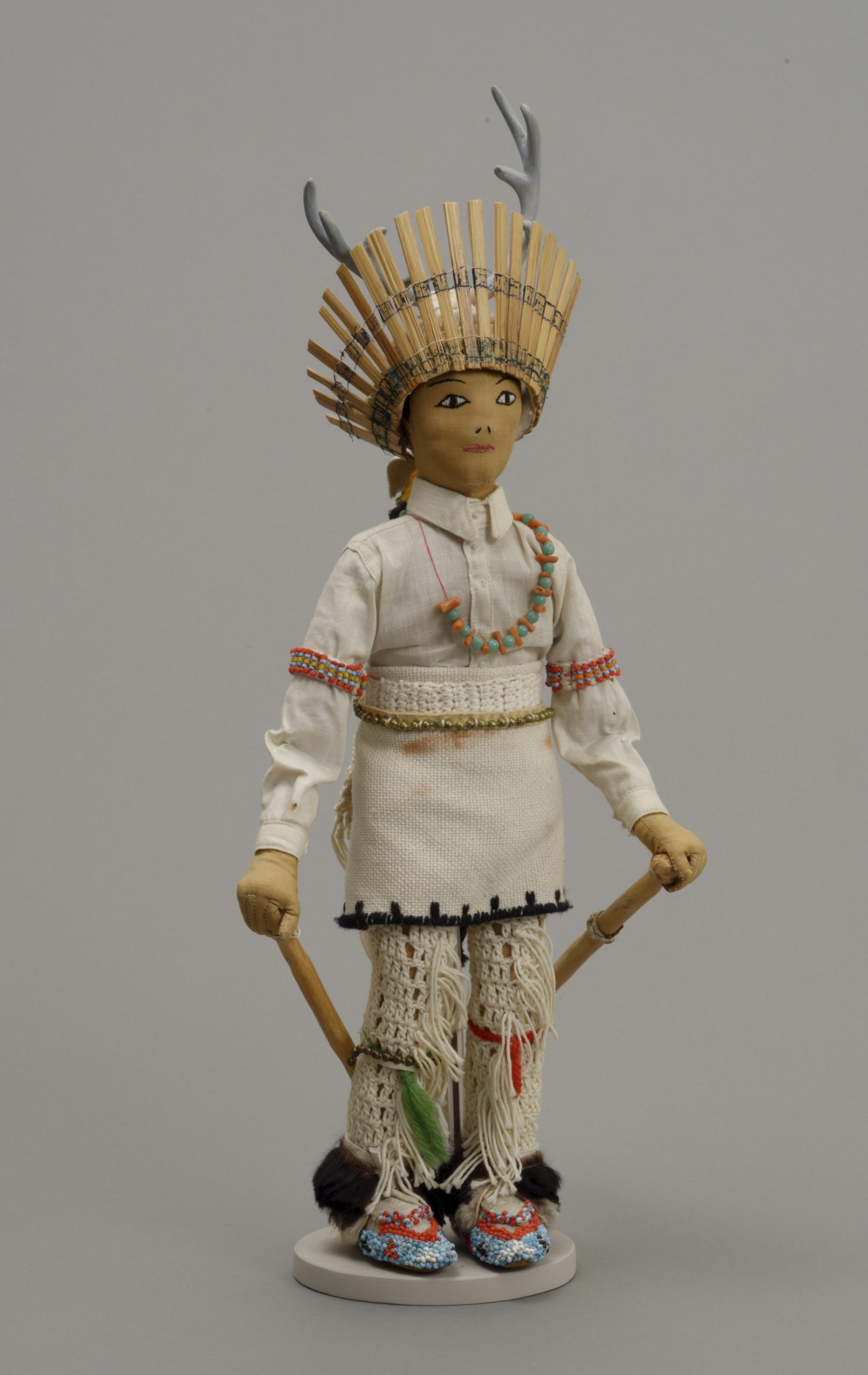Jicarilla Apache
Moccasins
- About 1900
- Native-tanned hide, rawhide, glass beads, tin, ochre, and thread
- 5 1/8 × 3 3/4 × 10 1/4 in.
Hood Museum of Art, Dartmouth College: Bequest of Frank C. and Clara G. Churchill; 46.17.9960
visibilityLook & DiscussA native invention, moccasins are an extremely versatile, comfortable form of footwear. They are made for everyday use and for ceremonies.
Every Southwest culture had its own style of moccasins. These moccasins were made for a Jicarilla [hee-kuh-REE-uh] Apache man. The Jicarilla are originally from what is now northern New Mexico and the surrounding areas. These moccasins would have been worn for dancing.
Explore the Object
These moccasins were made of one piece of leather sewn at the top, or vamp, and at the back of the heel. The maker added an extra leather piece for the tongue and cut it into a forked shape. <IMAGE: Illustration 20>
The moccasin is held in place with a rawhide thong around the ankle. A long fringe of rawhide was inserted into the back seam.
The leather was dyed with ochre, a natural pigment found in clay. It gives the moccasins their distinctive yellow color. Green and white beaded bars run perpendicular to white and blue beads sewn in a narrow band of alternating triangles along the vamp. A fringe of cones, shaped from pieces of tin, adorns the sides.
Everything about the design of these moccasins—the color, beadwork, fringe, and bells—would have drawn the eye of the audience to the feet of this dancer.
Activity: Matching Moccasins
The construction and decoration of moccasins vary from culture to culture. So distinctive are some moccasin styles that long ago a skilled tracker could tell the tribe of the wearer by his footprints. See if you can match the outlines below to the shapes and cuffs of each of the following pairs of moccasins. (Answers appear at the bottom of the page.)
learn more
In this video, art historian Joyce Szabo discusses these Jicarilla Apache moccasins.
Southwest: Clothing & Regalia
Answers: Moccasin Matching Activity
Moccasin 1-Outline D: Jicarilla Apache, child’s moccasins, about 1900. Native-tanned hide, glass beads, tin cones, ochre, and thread, 2 3/4 × 1 15/16 × 4 7/16 in. Hood Museum of Art, Dartmouth College: Bequest of Frank C. and Clara G. Churchill; 46.17.9965.
Moccasin 2-Outline A: Diné (Navajo), New Mexico, moccasins, about 1904–9. Leather, rawhide, and silver buttons, overall: 10 1/4 in. Hood Museum of Art, Dartmouth College: Bequest of Frank C. and Clara G. Churchill; 46.17.9972.
Moccasin 3-Outline B: Mescalero Apache, New Mexico, child’s moccasins, about 1900. Rawhide and beads, 4 3/4 × 2 3/8 × 2 3/16 in. Hood Museum of Art, Dartmouth College: Bequest of Frank C. and Clara G. Churchill; 46.17.9963.
Moccasin 4-Outline C: Isleta Pueblo (Sieh-Wibag), New Mexico, child’s moccasins, collected 1907. Leather and sinew, 5 1/2 × 1 15/16 × 3 3/4 in. Hood Museum of Art, Dartmouth College: Bequest of Frank C. and Clara G. Churchill; 46.17.10049.












